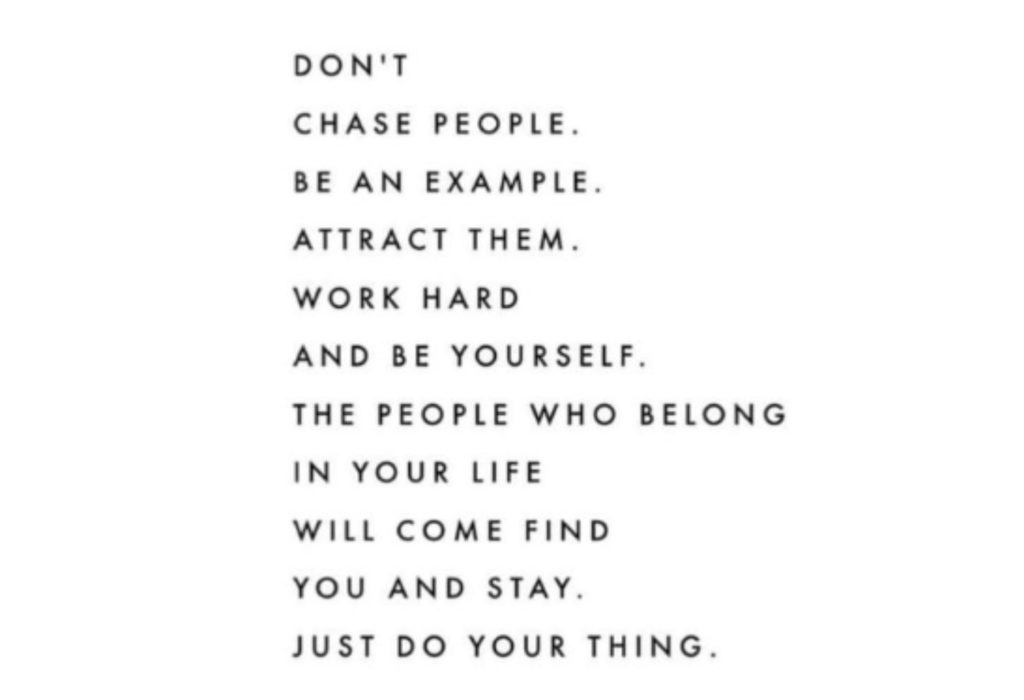

Our culture today gives a lot of worthy attention to the ideas of being yourself and being authentic.
Most people define “authentic” as “how they feel” or “what feels most natural” or “what makes them most comfortable.”
For the last 50 years, one of the primary ways people have been encouraged to identify what’s authentic for them has been to use Personality Assessment tools. We use these assessments to help people identify their most authentic selves.
Here are a few assessments/tools people use to define what’s authentic to them:
None of these things are inherently bad (although some are worse than others) and some can truly be helpful on a team. But there’s a danger in using an assessment to define who you are and thereby define what’s authentic to you.
To illustrate: You’ve seen something like this on the internet?

If you look closely, this meme contradicts itself. Do you see it?
This meme tells you to “Be Yourself.” But then it also tells you to do and not do other things.
Like the instruction to work hard. But what if you’re more into play—and working hard isn’t authentic to you?
Or the instruction not to chase people. But what if you’re a winsome person—and when you’re most yourself, you chase people?

You see, once you tell someone to be themselves, then you can’t tell them not to chase people, unless not chasing people is being themselves. Which may or may not be. What if they’re a 3w2 on the Enneagram or have Woo with the StrengthsFinder or if their Disney Princess is Alice in Wonderland who chases the white rabbit?
Then their assessment and/or their feelings might tell them to chase someone as a way of being authentic.
Of course, this is relatively harmless (and silly).
But not all examples are.
What if “being yourself” is to hurt someone?
We don’t want sociopaths to be themselves. We don’t want serial killers to simply be authentic. If you were about to be attacked by someone, you wouldn’t say to them, “Just be yourself! Follow your bliss!” You’d probably say something like this, “DON’T ATTACK ME!” In that moment you don’t care if they’re themselves or not. You don’t want them to be authentic to their murderous desires. You want them to be inauthentic. To NOT be themselves.
So, if you can’t use emotions or habits or personalities to be the sole defining metric for authenticity—then what can you use?
Think about a single mom with a 4-year-old daughter. It’s 5:00 a.m. The mom wakes up to the quiet opening of her door and she hears the pitter-pat of little feet and clumsy grabbing of the blankets as the daughter climbs into her bed. The daughter wants her mom to get up so they can play in her bedroom. Now, often what’s authentic in that moment is for the mom to ignore the daughter, or maybe get a little irritated at the daughter, or maybe get up, plop her daughter back in her room and run back to bed. (I’ve talked with many moms and they’ve confirmed this).
But every now and then, the mom fights those authentic instincts. Maybe she gets up, wipes the sleep from her eyes, and accepts her daughter’s invitation. Maybe she spends a few minutes watching her daughter play in her lap, listening to that adorable breathing noise that small children make.
In that moment the mother didn’t do what felt authentic. She did what she was committed to.
At Novus Global, we teach that commitment is the primary (and most often forgotten) attribute of authenticity.
In other words, to understand what is authentic to you, ask: what are you committed to?
The mom who gets up is—in that moment—committed to loving her daughter no matter how mom feels. It doesn’t matter what her Enneagram is. It doesn’t matter what her MBTI or Disney Princess is. In that moment, she transcends assessments to become what she’s committed to: her definition of a good mother.
You see, self-awareness programs often start with asking the question, “Who am I, really?” and then you design your life around that.
In our coaching practice, we invite clients to reverse that question and ask, “What am I committed to, really?” And the next step is to become whomever it is you need to become to accomplish whatever it is you’re committed to.
Too many people are merely committed to what feels good in the moment or what’s most natural with their habits. Too many people are more committed to their MBTI or Enneagram or Top 5 strengths in StrengthsFinder than their vision for their lives or teams or organizations. This shapes their world view and limits how they perceive themselves and the options available to them to a number or star or 5 words or 4 letters. We too easily forget that tools are a means to an end, not an end in and of themselves.
You are not your personality assessment.
You are more than that.
To live an authentic life has less to do with an assessment or how you dress or what you say in a meeting or your gender or ethnicity or socio-economic class, and more to do with becoming whomever you need to become in order to accomplish whatever vision for your life you’re committed to.
Let me ask you:
Be authentic to that.
And of course, along the way, find natural ways of becoming whatever that is. Use all the assessments your heart desires. Embrace your inner Disney Princess. But never let an assessment replace a vision.
Rather, let assessments serve your vision as you seek more efficient and creative ways to accomplish whatever it is you’re committed to.
First published on globalleadership.org
© 2021 Novus Global | All Rights Reserved